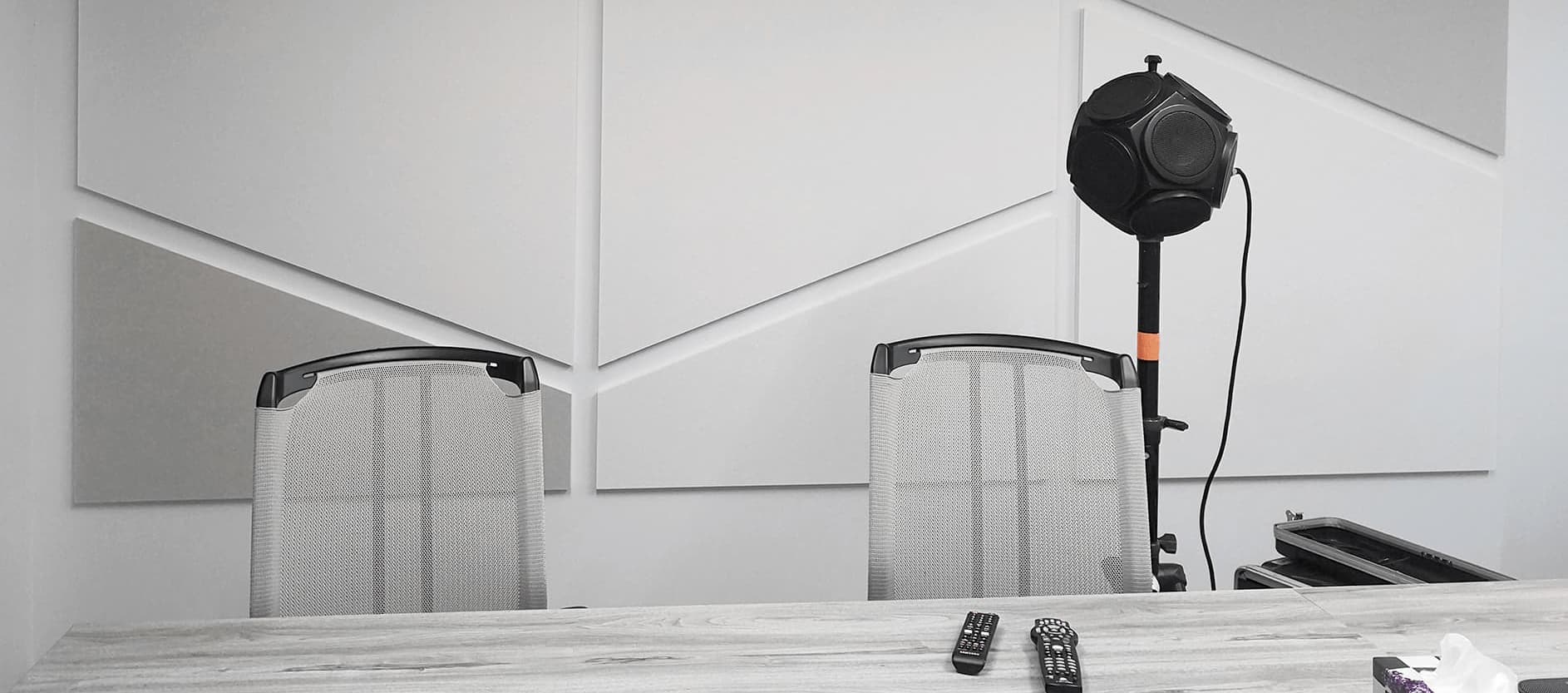Our glossary is designed to help you better understand the terms used in the field of acoustics and vibration.
Flexible Vibration Damping
- A flexible vibration damping is a mechanical system that enables the weakening/damping of mechanical vibrations. A common example is the suspension of any transportation vehicles. The damping is said to be “flexible” if the used material is flexible (ex: rubber or plastic).
- The analysis of natural modes of vibration. A vibrational mode is an oscillatory motion to which is associated a natural/resonance frequency.
- A noise reduction technique that uses an auxiliary source to counter the unhealthy noise. Each sound wave is characterized by an amplitude (the sound force that we perceived) and a direction. If an inverted wave (negative amplitude—we don’t perceive the difference!—and opposite direction) is generated, it will cancel out the unhealthy one, just like +1 – 1 = 0. However, since practice and theory often diverge, the unhealthy sound wave won’t be completely gone.
- A device used to vacuum the dust produced by certain factory activities, such as rock crushing.
- The phenomenon by which a sound/vibratory wave passes through a material. Before passing through a wall, the wave has a given amplitude, speed and direction. Once through (assuming no energy loss, which is practically impossible), the direction has changed. The wave has been dispersed.
- Dispersion acoustique ou vibratoire en fonction de la géographie du terrain étudié. Une cartographie sonore ou vibratoire par modélisation est souvent le résultat visuel attendu.
- Solid structures placed indoors or outdoors that block or redirect sound waves. They are made from absorbent materials. Such acoustic devices can be seen along some highways. They ensure that the people living nearby have a quieter standard of living.
- Phonic materials that absorb sound waves. The level of absorption varies according to the frequency (high, medium or low) of the wave that passes through the material. It can be porous/fibrous (textile, carpet, foam, rock or glass wool), be a sheet/membrane (the sheet has to deform itself like a membrane as to absorb the vibration of the sound wave) or be a resonator (open cavity with a neck).
- A technique that measures the content of suspended particles in a gaseous or liquid medium.
- A wave that enables the production and the transmission of the vibratory effect of a particle to another within a rigid body (ex: a beam) or elastic body (ex: an elastic) or a medium (ex: water). It thus results in vibrations (fast oscillatory movements).
- The quantity of sound energy or the Acoustic Power per unit area.
- Frequency at which a structure or instance resonates. The structure may then start vibrating without control until its rupture (unless the frequency changes). A well-known example is the Tacoma Narrows Bridge in the State of Washington (1940), which, during windy conditions, began to resonate until it collapsed.
- The difference between the pressure produced by the sound wave and the ambient pressure of the medium (ex: air or water) through which the wave passes.
- The total sound energy irradiated in all directions.
- Phenomenon caused by the repeated reflection of sound waves once the sound source had been stopped. Commonly called echo.
- Cylindrical or rectangular device that absorbs sound within its conduit. The resulting sound is thus reduced. Two well-known examples are the exhaust pipe of any vehicle and silencers added to the tip of pistols in movies (the efficiency of the latter is not as exceptional in the real world!).
- Any structure (wall, roof, beam, etc.) made with absorbent materials that enables an acoustic insulation of the room.
- HVAC is an acronym that refers to any Heating, Ventilation and Air Conditioning system in residential, commercial or industrial buildings. It regulates temperature, humidity and air quality.
- Audibility tests evaluate to what sound level a given equipment or acoustic phenomenon begins to be audible in a given location.
STC (ASTC/FSTC)
- Sound Transmission Class/Apparent Sound Transmission Class/Field
- Sound Transmission Class: A unique number that represents the insulation of a partition. The STC is done within a laboratory, while the ASTC and FSTC are done on-site.
ICC (FIIC/AIIC)
- Impact Insulation Class/Field Impact Insulation Class/Apparent Impact
- Insulation Class: Unique number that represents the ability of a construction to block impact noises. The ICC is done within a laboratory, while the FIIC and AIIC are done on-site.
OITC
- Outside/Inside Transmission Class: Test that enables the characterization of the sound insulation of a facade. The higher the result, the lesser the sound is being transmitted to the other side of the partition. Thus, outdoor sound penetrates less inside a house, for instance, and vice-versa.
AI
- Articulation Index: Index that measure speech intelligibility.
SPC/STI
- Speech Privacy Class/Speech Transmission Index: Methods to measure speech confidentiality and intelligibility.
PI
- Privacy Index: Index that measures speech confidentiality.
- Paths by which the acoustic and/vibratory waves are being transmitted. They can be solid (passing through the ground) or airborne.

